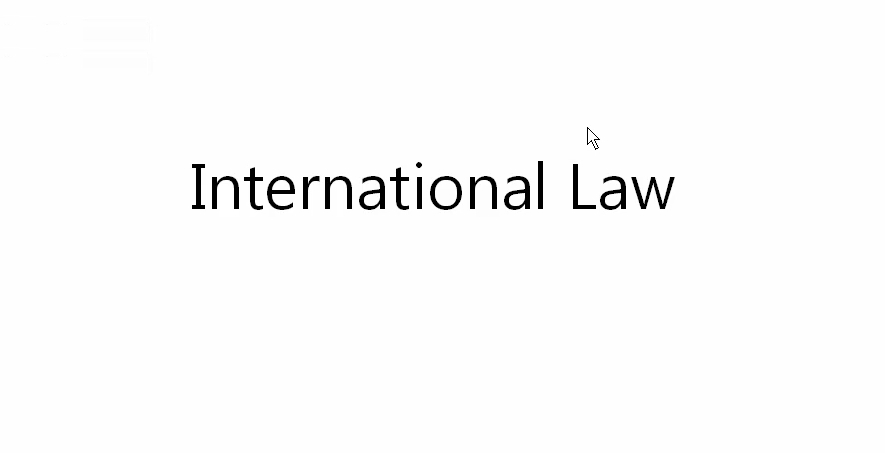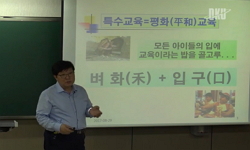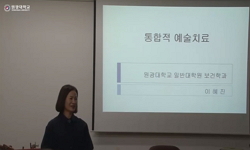China-Hong Kong CEPA and the China-Taiwan ECFA are preferential trade systems of bilateralism and regionalism which are different from the WTO’s Most Favored Nation Treatment (MFN) and multiateralism. CEPA and ECFA both are types of the Free Trade A...
http://chineseinput.net/에서 pinyin(병음)방식으로 중국어를 변환할 수 있습니다.
변환된 중국어를 복사하여 사용하시면 됩니다.
- 中文 을 입력하시려면 zhongwen을 입력하시고 space를누르시면됩니다.
- 北京 을 입력하시려면 beijing을 입력하시고 space를 누르시면 됩니다.
https://www.riss.kr/link?id=A82610397
-
저자
강효백 (경희대학교)
- 발행기관
- 학술지명
- 권호사항
-
발행연도
2011
-
작성언어
Korean
-
주제어
주권 ; 대등성 ; 통합 ; 국제법 ; 국내법 ; 경제협력강화약정 ; 세계무역기구 ; 해협양안경제협력체제협정 ; EHP프로그램 主权 ; Sovereignty ; Equality ; Integration ; International Law ; Domestic Law ; CEPA ; Closer Economic Partnership Arrangement ; WTO ; World Trade Organization ; ECFA ; Economic Cooperation Framework Agreement ; EHP ; Early Harvest Program ; 对等性 ; 統合 国际法 ; 国內法 ; 更织 ; 海峡两岸经济合作框架协议 ; 早期收获紧密经贸关系的按排 ; 世界贸易组
-
등재정보
KCI등재후보
-
자료형태
학술저널
-
수록면
173-203(31쪽)
-
KCI 피인용횟수
5
- DOI식별코드
- 제공처
-
0
상세조회 -
0
다운로드
부가정보
다국어 초록 (Multilingual Abstract)
China-Hong Kong CEPA and the China-Taiwan ECFA are preferential trade systems of bilateralism and regionalism which are different from the WTO’s Most Favored Nation Treatment (MFN) and multiateralism. CEPA and ECFA both are types of the Free Trade Agreement (FTA) legally based on Article 24 of GATT 1994, understanding of interpretation of Article 24 of GATT 1994, Article 2 and Article 5, Paragraph 2 of GATS of the WTO. The greatest difference between the two is the question of the title of sovereignty. The former is an unequal FTA signed by the legal entity of “One Country, Two Systems” of exclusive tariff territory (Hong Kong) within the same country (China). Meanwhile, the latter is an equal FTA concluded by the legal entity of ‘a special national relationship’ between a country (China) and the other (Taiwan). CEPA is composed of 6 chapters, 23 articles and 6 attached documents including the introduction, general provisions, commodity trade, country of origin, simplification of trade investments, and others. ECFA is organized with 5 chapters, 16 articles, and 5 attached documents starting with the introduction and general provisions, followed by trade and investment, economic cooperation, early liberalization of tariff (early harvest), and others. The purpose of CEPA is to reduce and abolish tariffs and non-tariff barriers of all practical commodity trades between China and Hongkong, promote liberalization of service trades as well as the facilitation of trade investments. On the other hand, ECFA aims to gradually strengthen economy, trade, and investment cooperations between China and Taiwan, and establish liberalization of commodity and service trades, equal, clear and convenient investment, and an economical cooperation mechanism in stages. These include commodity trades, service traces, and investment. However, while CEPA emphasizes regulations on place-of-origin to prevent preferential treatment including tariff removal from leaking out to offshore countries, ECFA recognizes them both as urgent issues and lays stress on the early harvest program, which is to first remove custom tariff from mutually agreed commodity trades and some service trade items. ECFA is closer to the general FTA than CEPA from the viewpoint of equality.’ Still, as a transitional agreement for developing into a higher-level FTA through future negotiations in a ‘perfection of negotiations’ perspective, ECFA keeps a further distance than CEPA which is a package settlement of negotiations. CEPA and ECFA are meaningful not only as singular economic integrations of four independent customs areas of China, Taiwan, Hong Kong and Macao, but also as a national integration process aiming for constructing a Greater China. CEPA provides reference data on establishing position of the Gaesung Industrial Complex by international and domestic laws, while ECFA presents the possibility of national unification through economic integration. This is very suggestive to the Republic of Korea, as the North and South continues to stand in hostility.
목차 (Table of Contents)
- I. 문제의 제기
- II. FTA의 법적근거 및 CEPA, ECFA 유형 비교
- III. CEPA와 ECFA의 구조 및 주요내용 비교
- IV. CEPA와 ECFA의 법적성격 비교
- V. 결론
- I. 문제의 제기
- II. FTA의 법적근거 및 CEPA, ECFA 유형 비교
- III. CEPA와 ECFA의 구조 및 주요내용 비교
- IV. CEPA와 ECFA의 법적성격 비교
- V. 결론
- 参考文献
- Abstract
참고문헌 (Reference)
1 "홍콩 재정사"
2 "한국 외교통상부 자유무역협정"
3 윤성욱, "한-중 FTA: 한국의 대응 방향을 중심으로" 중국학연구소 (29) : 229-254, 2010
4 지만수, "중국ㆍ대만 ECFA의 주요내용과 시사점" KIEP 2010
5 "중국 외교부"
6 "중국 상무부"
7 "중국 국무원발전연구중심"
8 "세계무역기구"
9 정인교, "동아시아경제통합, 주요국 입장과 통합관련 이슈" 서울경제경영 2009
10 "대만 총통부"
1 "홍콩 재정사"
2 "한국 외교통상부 자유무역협정"
3 윤성욱, "한-중 FTA: 한국의 대응 방향을 중심으로" 중국학연구소 (29) : 229-254, 2010
4 지만수, "중국ㆍ대만 ECFA의 주요내용과 시사점" KIEP 2010
5 "중국 외교부"
6 "중국 상무부"
7 "중국 국무원발전연구중심"
8 "세계무역기구"
9 정인교, "동아시아경제통합, 주요국 입장과 통합관련 이슈" 서울경제경영 2009
10 "대만 총통부"
11 "대만 외교부"
12 "대만 경제부"
13 "대만 ECFA"
14 이병조, "국제법신강" 일조각 1997
15 关嵐, "淺议ECFA" 法制与社会 2010
16 袁发强, "海峡两岸<综合性经济合作协议>的法理思考" 时代法学 2009
17 左连村, "更紧密经贸关系安排—对提升粤港澳区域经济竞争力的探讨及前景展望" 9 (9): 2006
18 殷嘯虎, "憲法学" 上海人民出版社 2003
19 郑勇, "区域贸易按排大陸与台湾实施ECFA的法律启示" 25 : 2011
20 傅琨成, "从南中国的区域经济一体化走向大中华经济圈, In 区域安排法律问题研究" 北京大学出版社 2004
21 肖杨, "两岸经济合作架构协议成为岛内热议焦点" 两岸关注 2009
22 박덕영, "WTO통상조약집" 박영사 2006
23 曾华群, "WTO规则与中国经贸法制的新发展" 厦门大学出版社 2006
24 曾令良, "WTO框架下两岸经济合作框架协定的法律定位" 时代法学 2009
25 鍾立国, "WTO区域贸易协定的规则及期完善" 36 : 2005
26 강효백, "G2시대 중국법 연구" (주)한국학술정보 2010
27 이재기, "FTA의 경제학" 청록출판사 2007
28 이기환, "FTA(자유무역협정)" 문영사 2007
29 刘斌, "ECFA : 不是平等互惠, 而是片面最惠" 南方周末 2009
동일학술지(권/호) 다른 논문
-
- 한중법학회
- 김만홍
- 2011
- KCI등재후보
-
중국투자협정연구 -Tza Yap Shum v. The Republic of Peru Case 사건의 중재관할권 결정에 대한 분석-
- 한중법학회
- 이기평
- 2011
- KCI등재후보
-
- 한중법학회
- 남옥매
- 2011
- KCI등재후보
-
- 한중법학회
- 양효령
- 2011
- KCI등재후보
분석정보
인용정보 인용지수 설명보기
학술지 이력
| 연월일 | 이력구분 | 이력상세 | 등재구분 |
|---|---|---|---|
| 2027 | 평가예정 | 재인증평가 신청대상 (재인증) | |
| 2021-01-01 | 평가 | 등재학술지 유지 (재인증) |  |
| 2018-01-01 | 평가 | 등재학술지 유지 (등재유지) |  |
| 2017-06-01 | 학회명변경 | 영문명 : The Korean-Chinese Society of Law -> The Korea-China Society of Law |  |
| 2015-01-01 | 평가 | 등재학술지 선정 (계속평가) |  |
| 2013-01-01 | 평가 | 등재후보학술지 유지 (기타) |  |
| 2012-01-01 | 평가 | 등재후보 1차 PASS (등재후보1차) |  |
| 2011-01-01 | 평가 | 등재후보학술지 유지 (등재후보1차) |  |
| 2010-01-01 | 평가 | 등재후보학술지 유지 (등재후보1차) |  |
| 2008-01-01 | 평가 | 등재후보학술지 선정 (신규평가) |  |
학술지 인용정보
| 기준연도 | WOS-KCI 통합IF(2년) | KCIF(2년) | KCIF(3년) |
|---|---|---|---|
| 2016 | 0.14 | 0.14 | 0.1 |
| KCIF(4년) | KCIF(5년) | 중심성지수(3년) | 즉시성지수 |
| 0.1 | 0.08 | 0.241 | 0.08 |





 KCI
KCI eArticle
eArticle






